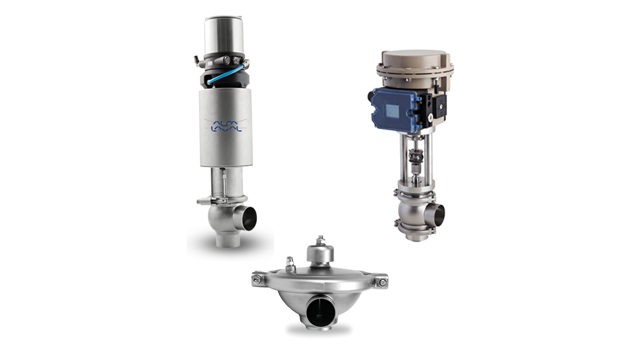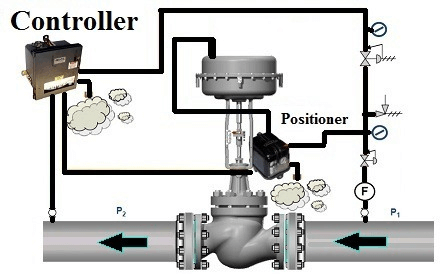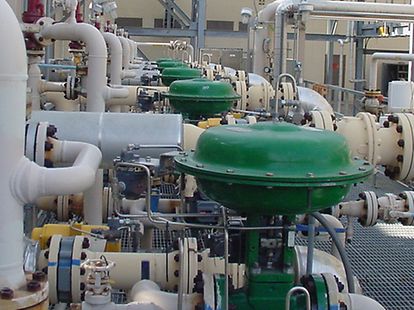Enhancing Operational Efficiency with Advanced Control Valves
Wiki Article

Maximize Energy Savings and Convenience With Advanced Building Automation Controls
In the world of modern-day style and facility administration, the assimilation of advanced structure automation controls stands as a crucial improvement. The merging of modern technology and sustainability has actually birthed a new period where energy effectiveness, comfort optimization, and functional streamlining are no longer achievable facts but far-off ambitions. By harnessing the power of automation, buildings can adapt, respond, and evolve in manner ins which were when unbelievable. The possibility for significant power savings and enhanced convenience is not simply an assurance yet a possibility waiting to be fulfilled. This standard change in structure administration holds the vital to opening a globe where environmental conscientiousness and passenger health sympathetically exist together within the wall surfaces of our structures.Power Performance Perks
Power effectiveness advantages can considerably reduce energy usage and functional expenses in buildings. Energy-efficient systems, such as advanced structure automation controls, can optimize the use of sources like air conditioning, heating, and lighting, leading to reduced power expenditures over time.Additionally, improved energy efficiency can lengthen the life-span of structure equipment and systems. By running extra efficiently, heating and cooling systems, lighting fixture, and other structure elements experience much less wear and tear, causing lowered upkeep and replacement prices. Additionally, energy-efficient buildings usually regulate greater building worths and rental rates, providing long-lasting economic advantages to proprietors.
In addition, power efficiency can improve owner convenience and productivity. Appropriately managed indoor settings with optimum lights and thermal problems produce a more pleasant and conducive workspace, leading to enhanced worker complete satisfaction and efficiency. Overall, the energy efficiency benefits associated with advanced building automation controls are complex, incorporating price financial savings, ecological stewardship, and resident well-being.
Enhanced Comfort Control
Enhancing convenience control in structure settings requires an innovative integration of advanced automation systems for ideal passenger wellness. By making use of innovative building automation controls, facilities can customize the interior atmosphere to fulfill the certain demands and preferences of occupants. These systems allow accurate guideline of temperature, lights, and ventilation, creating a comfy and efficient environment. Resident contentment and efficiency are carefully connected to thermal convenience, making it vital to have systems in area that can adjust to transforming problems in real-time.Boosted comfort control surpasses standard temperature level modifications. It includes features such as customized settings, occupancy sensing units, and natural light use to produce a vibrant and receptive setting. By integrating these innovative controls, structures can not just boost comfort yet additionally enhance energy performance by optimizing system operations based on real occupancy and use patterns. Ultimately, focusing on passenger comfort through sophisticated automation systems results in a more enjoyable and healthier interior setting.
Operational Efficiency Improvements

Additionally, the implementation of real-time tracking and analytics devices allows structure drivers to identify energy inadequacies and operational anomalies without delay. By continually keeping an eye on energy use patterns and system performance metrics, changes can be made in real-time to enhance power intake and make certain peak functional performance. control valves. Furthermore, including need action approaches into building automation controls can better boost operational efficiency by dynamically adjusting power usage based on grid problems and pricing signals
Indoor Environment Optimization
Efficient interior environment optimization is a basic facet of building automation controls, ensuring residents' convenience like this and wellness while making best use of power cost savings. By making use of sophisticated sensing units and controls, building automation systems can constantly readjust and keep an eye on temperature, moisture levels, air top quality, and ventilation to produce an optimum interior atmosphere. Keeping comfortable and constant problems not only improves resident satisfaction however likewise improves efficiency and total wellness.Indoor environment optimization also plays a vital duty in power efficiency. By fine-tuning air flow, heating, and air conditioning systems based upon real-time information and tenancy patterns, constructing automation controls can significantly decrease energy consumption - control valves. Applying techniques such as demand-controlled ventilation and thermal zoning can assist reduce energy waste while ensuring that each location of the building receives the essential conditioning.

Sustainable Setting Development
Structure automation controls not only maximize interior environment problems for power performance and resident comfort however likewise lay the foundation for creating a sustainable atmosphere via calculated monitoring of resources and systems. By incorporating sophisticated building automation modern technologies, such as sensors, actuators, and smart software application, centers can keep track of and readjust power use in real-time to decrease waste and reduce their carbon footprint. These systems enable predictive maintenance, determining possible issues prior to they intensify and optimizing devices efficiency to boost longevity and effectiveness.In addition, lasting atmosphere production extends beyond energy management to incorporate water conservation, waste decrease, and interior air top quality improvement. Structure automation controls can regulate water usage, find leaks, and make certain proper garbage disposal methods, contributing to total sustainability efforts. Furthermore, by managing and keeping track of air flow and purification systems, these innovations boost passenger wellness and efficiency while reducing power consumption related to HVAC procedures.
Final Thought
Finally, advanced building automation regulates deal significant advantages in terms of energy financial savings, convenience control, functional efficiency, indoor environment optimization, and developing a sustainable environment. By carrying out these controls, buildings can attain optimum performance while minimizing power intake and improving occupant convenience. It appears that using innovative automation innovation is critical in improving building performance and producing a more lasting future.Energy effectiveness advantages can dramatically minimize energy intake and operational expenses in buildings. In general, the energy efficiency advantages connected with advanced building automation controls are diverse, including cost savings, environmental stewardship, and owner wellness.
Additionally, integrating demand response methods right into building automation controls can further boost operational effectiveness by dynamically adjusting energy usage based on grid conditions and rates signals.
Building automation controls not just optimize interior environment conditions for power effectiveness and occupant convenience yet also lay the foundation for producing a lasting atmosphere through strategic administration of systems and resources.In verdict, advanced structure automation controls deal significant benefits in terms of power financial savings, comfort control, functional performance, interior environment optimization, and creating a sustainable environment.
Report this wiki page